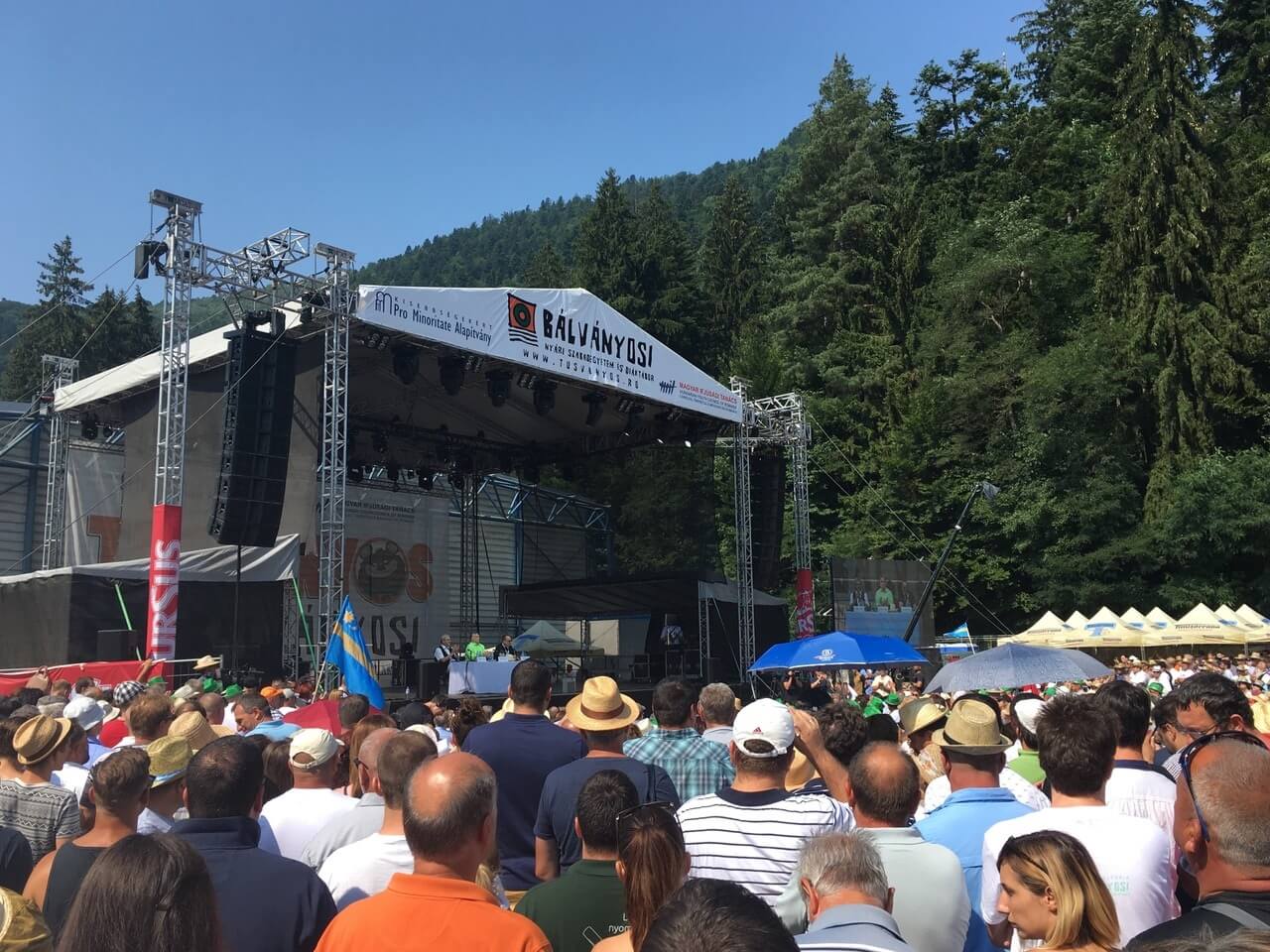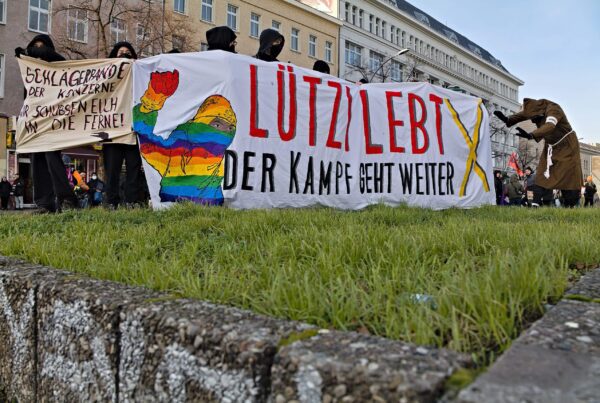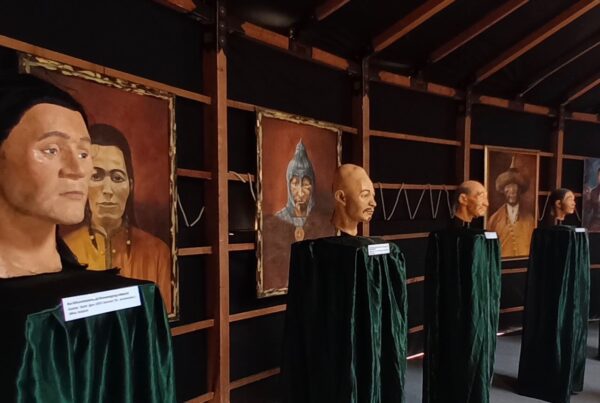The interpretation of the Orbán regime has become an important topic in the international press and academic literature over the past decade as a contemporary example of the dismantling of democracy and the liberal democratic establishment. There are some elements that bind these interpretations together: the large scale re-centralization in many areas, from education to public administration and law; the distortion of Hungarian media relations, including the creation of a clear governmental media dominance; systemic corruption; and state-level anti-immigration and racist discourses and acts.
These structural changes are what the ruling Fidesz party has been introducing during the last decade and the success of this approach to political communication have served as a ground for Fiedsz’ establishment of its hegemony in the fields of politics, society, and culture too. A further question is how Fidesz’ hegemony has been manifested in the consumption of culture and everyday situations. To understand the process locally, it is essential to look at how the people accept and take political discourses for granted, how the culture war of the regime against “liberal” and “Western” values unfolds at the everyday level. Besides many other sites of everyday life, popular music can play a part in the facilitating of the process of hegemony-building.
Some scholars have pointed out that music as a practice and as performance has the power to create, or to strengthen social movements. It can articulate and popularize political demands, and mobilize emotions. Other researchers emphasize that the boundaries between popular culture and politics are becoming blurry structurally and discursively, with political debates as source of entertainment and spectacle. The media’s domination of how politics is portrayed is also important, with politicians being placed on the same level with film and television actors: popular musicians have been assuming the roles of political advocates, with professional politicians performing as celebrities. Péter Csigó highlights how politicians’ struggle for popularity, which takes place in a media-dominated environment, is mobilized and kept in constant campaign mode through stereotypes about “the people,” the people’s needs, and general prejudices about taste of “the people.” This constant campaign is supported by a constant speculation of think tanks, political PR specialists, and politicians regarding the public’s social demands and preferences with the same logic as in the case of pop culture.
Pop culture and especially pop music play an important role in the formation and reproduction of national identity. They contribute to the dissemination of populist messages and provide interpretations and explications on culture wars led by populist politicians. For example, the extensive national rock music networks of the 2000s played an undeniable role in the interweaving of radical right-wing subcultures and the radical-right party known as Jobbik in Hungary. The concerts of national rock bands not only provided a musical experience, but also an opportunity for performances of political affiliation and nationhood. Political content was linked to a particular mode of expressing and worldview, an attitude, and the unifying power of participation.
It’s small wonder that since 2010 Fidesz’ cultural hegemony has been built in part on the co-optation and embracing of radical right-wing bands, on the “popification” of memory politics and political campaigns, and on the expansion of funding for and control over pop music. At the same time, the Hungarian case is also important in that it points to the class contexts of hegemonic construction, and to the ways in which cultural forms, supported content, and political-memory interpretations become legitimated and mainstreamed through subsidy policies, and how these are linked to the representation of the middle class preferred by the party in power. In this sense, the themes discussed below, such as national belonging and solidarity, Christian values, and militarism, are intertwined with elements of taste and style to reinforce the rhetoric of populist politics, and also to underpin the legitimate taste of the middle class as conceived of by the Fidesz government.
Here I examine examples of popular music that help spread the ideological messages of Fidesz’ culture war and make these accessible for different audiences. In cooperation with Emília Barna, we began our research examining the role of popular music in the spread and normalization of populism and populist discourses in Hungary. Since 2019, we have been looking for answers to questions such as: How are populism and popular music connected? How does popular music facilitate the normalization and mainstreaming of populism? What is it, specifically, about popular music – why is it a successful tool when used in social and political contexts?
We started from the premise that music can play a part in the solidifying of political power through its ability to address social groups through processes of identification and its ability to create a feeling of community. The research draws on participant observation at relevant political and music events, musicological group analysis, and analysis of political and music-industry opportunity structures.
We identified those mainstream Hungarian bands and music styles that are highly popular on music stations and have the biggest live shows in Hungary and take active role in the hegemony building, such as those rock bands and performers established during the Communist and post-regime-change eras, radical right-wing subcultures, and politically active mainstream performers. Certain types of events stand out as the most important fields where music plays an important role in facilitating the hegemony and mainstreaming political messages. Firstly, there are free events financed by local councils, many of which are village fairs or festivals, and we shall include local or gastronomic festivals in the list. These events have the aim of strengthening local identity and facilitating community-building. Funding policy has a role in selecting which local councils are able to organize festivals, in the selection of the invited bands or artists, thus providing power to the government to influence local identity-building in a way that incorporates in it its own identity-policy projects.
Culture war as symbolic self-defense
Over the past 12 years, the diverse directions taken by Fidesz’ cultural struggle have gradually crystallized, and it has become clear that it has links to a brand of radical right-wing identity politics that is found elsewhere around the world as well. The conservative opportunism and ideological omnivorousness of the early 2010s has been transformed into an established hegemonic party that problematizes the same social issues and identity-politics topics as the far-right and radical right-wing parties and organizations in the US or in Western European countries. Over time, and with the expansion of state campaigns and propagated discourses of xenophobia (that is, the idea of “race mixing” as an external threat), the “defense” of Christian values, the sexist, misogynist remarks and practices and the spread and incorporation of heteronormative family images into public policies, became banal in the political communication and in everyday life.
In Hungary, the hegemonic power presents the concept of culture war as political action undertaken by the Orbán government as a legitimate means of defending national pride, national values, and community. Thus, for the Fidesz party’s ideologists, it is not an analytical or descriptive concept. This is one of the areas of the government’s ideology where the effort to make the divergent, even contradictory discourses appear unified and thoughtful is most evident. Here, the problem of the vulnerability of underfinanced cultural institutions and their exposure to the market, the critique of globalization and consumerism, meets paternalistic and nationalist conceptions of culture and is channeled into the political system. Policies divide cultural institutions, loyal local councils, and their employees into those who deserve state funds and those who do not.
In the culture war, the two groups—the “useful” and “the useless” (or “harmful to the nation”—are confronting each other, with the state acting as a clientelistic and paternalistic protector to maintain these boundaries in its policy of distributing financial support and honor. Rogers Brubaker emphasizes that populist demands are located at the intersection of the politics of inequality and identity politics, where the question of who deserves, or “who gets what” becomes constitutively entwined with “who is what.” For this reason, the discourses of the culture war and distribution of resources, opportunities, and honor become linked in the articulation of identity and loyalty to the governing party.
The culture war does not only affect the distribution of symbolic signs and images associated with the nation, but also influences the institutions and infrastructure of the cultural sphere. Political communication proclaiming legitimate self-defense could not be successful if cultural institutions and cultural funding did not reflect or align with it, and if it did not also affect people’s everyday lives, cultural consumption, and opportunities. One of the functions of the struggle for and through culture, in accordance with the functioning of the populist system, is to define, name, and teach society about the external and internal forces that are harmful to the nation.
Since 2010, the forms of commemorations and national holidays have also changed dramatically, becoming enriched with popular music elements. To attract larger crowds and to disseminate knowledge widely in line with the government’s identity policy, several attempts have been made to write new pop music songs, patriotic songs, and rock operas. Although in most cases these productions did not really live up to expectations and did not become wildly popular, they did reach a wide range of audiences on specific occasions. The growing power of the governing party, and at the same time the financial problems of the music market and the vulnerability of music industry workers, became more visible during the covid-19 pandemic.
The incorporation of the live music industry into the hegemonic structure of Fidesz has accelerated significantly. The dependence on cultural funding not only increased ideological control but also the maintenance of infrastructure and facilities. This trend became more evident during the 2022 Hungarian parliamentary elections, when several artists expressed their open commitment to the government at various events (such as at the Peace March in 2022, attended by the Roma reality show star Győző Gáspár; or by rock musicians like Attila Pataky and Feró Nagy), or published joint photos with politicians in the press and social media (for example the Roma musician Kis Grofó, or the pop star Ákos Kovács), and these possibly increased political mobilization. The government’s image of success was also built on some international events like the World Eucharistic Congress in 2021 or the World Water Championships in 2022. It highlighted the government’s strategy on how to gain international recognition and how to integrate Hungary into the global cultural wars—in these cases as a modern champion of Christianity and small but successful player in the world of sports. The chosen musicians got the opportunity to take part in such events as performers and it could help them to make up for their lost income during the pandemic lockdowns.
As can be seen from this overview, the culture war of the Fidesz government is often embedded in different situations, is contingent, is contradictory, and is linked to different projects. The struggle is not a series of consistent actions that build on each other. One of the results of our research is that in the field of popular music, as in other areas of society, hegemony-building does not function as a well-adjusted system but is dominated by a power politics of varying degrees of success and the extension of control: changing structures, appropriating old ones, and fine-tuning rarely succeeds directly and immediately, but it nevertheless manages to exert influence in different arenas of everyday life. In the next section, I will shed light on the normalization of culture-war political discourses through contemporary Hungarian popular music examples, showing how mainstream pop music can amplify political messages, convey emotions, and create links between propaganda and people’s everyday experiences.
Performing for Hungarian Unity
Representations of national unity were a priority for the Fidesz-led government in the early 2010s. This was seen in the act of granting citizenship to people of Hungarian ethnicity or with Hungarian ties living abroad, mostly in the neighboring countries of Romania, Slovakia, Serbia, and Ukraine. One of the first laws passed for which Fidesz used its two-thirds majority in parliament allowed ethnic Hungarians from abroad to obtain Hungarian citizenship on a fast-track basis, and later also granted them the right to vote. The symbolic significance of the law was most appreciated by Hungarian communities living in minority communities abroad going back to the end of the First World War when the Austro-Hungarian Empire was eliminated, and whose ties to the motherland were traditionally strong. For many communities, this new institutional link with Hungary represented a form of historical reparation.
The most important new symbol of this act of national unification, however, was not the official Hungarian national anthem, but the song “Nélküled” (Without You) from 2007, by the band Ismerős Arcok (Familiar Faces), which had spread from a radical right-wing subculture into mainstream, which became even “an alternative anthem.” The song’s lyrics treat the nation as a kind of blood kinship, and the prominent lines stress the solidarity among and shared responsibility for the members of the united nation: “Whatever may happen, while we live and until we die/ We are of one blood.” The other important line, “like the five million Magyars unheard by the world” at live gigs is invariably accompanied by the ritual of the lead singer raising his open palm to indicate the “five” million and the audience responding in kind, which alludes to the unresolved issue of ethnic-national unification and the trauma of Hungarian minority groups from the surrounding countries.
The song’s rock ballad-like instrumentation with a solo singer accompanied by a piano creates a strong affective effect and the lyrics express the idea of togetherness, solidarity, and national belonging. In sixteen years, “Nélküled” went through a process of popularization. Many amateur covers appeared on social media since 2007. Meanwhile, participatory engagement and community performances have become increasingly popular: at weddings, karaoke events, soccer games, family gatherings, local festivals, and as the closing-time song in local bars. Recognizing its popularity and the embedded symbolic capital of the song, the Fidesz government after 2010 also began to use it as an alternative anthem on official holidays, at sporting events, during Fidesz campaigns or even in the context of covid-19 announcements, when restrictions were publicized accompanied by a new video of the song: “Not a Single Hungarian is Alone”.
Hungary as a Christian Fortress
The restructuring of public education since 2010 and the popular musical embedding of the dissemination of Christian values also show the rise of the representation of the Christian nation. The pop-cultural embedding of the theme and performance of Christianity was less spontaneous and less of a grassroots initiative or a broad social demand. In 2020, the Hungarian Parliament adopted a modification of the Fundamental Law of Hungary, which proclaims that Hungary protects the right of the children and provides education based on Christian values. Prior to this, in addition to centralizing public education, the government spent considerable public funds on the establishment of church schools, thus, renewing an old church function and repositioning the role of the church. The exploitation of major, spectacular events and the mobilizing potential of popular culture were important means of gaining government acceptance for church policy.
After 80 years, from September 5 to 12, 2021, the International Eucharistic Congress, an international gathering of Catholic leaders and believers, took place in Budapest. The preparation started in 2017. In addition to the traditional programs, the government found it important to enrich the program with pop music performers. In that year the government also launched a special support program for performers and artists to create new religious popular songs, and with the aim of activating religious communities through popular music and spreading Christian values to a wider section of society. The government treated financial support as a key to trigger structural changes, thus, as a new technique of social engineering.
In this context, the long-term trends of instrumentalizing popular music, and the involvement of popular artists who, thanks to their embeddedness and popularity, are given a prominent role in the performance of the ideology. Among these performers there are those who have gained national recognition over the last decade through their appearances on TV talent shows (such as Gabi Tóth), those who established their long pop musical careers in the 1970s (Róbert Szikora) or those who are at the top of the mainstream pop music (Ákos). The performed songs were mostly new for the audience and were released or newly instrumentalized for this event, combining folk elements, praise and worship songs different from the pop performers’ usual repertoire. The dissemination of religious values, the restructuring of the education system, the centralization of the media and government control over the infrastructure for the dissemination of ideologies function complementarily and help to represent the Christian image of the right-wing populist system.
The Protection of the Homeland
The national unity and the Christian character of the country are most closely linked to the core, substantive aspects of Fidesz’ ideology, while militarism refers to the defense of these values, to an active struggle, to constant mobilization against the enemies of the nation. In the public representation of the 2015 migration crisis, refugees were defined as an external force threatening European values and Christianity, and harmful to Hungarian culture, against which the paternalistic right-wing populist leader’s primary task was to defend. The modernization of the military infrastructure, the resources devoted to border protection, and the use of military colleges as a channel for upward mobility can serve as spectacular tools for the spread of militarism, but the recruitment of professional soldiers remains difficult and problematic. Musical bands were also involved in this kind of propaganda. The radical right-wing rock band Kárpátia that outgrew its subcultural affiliations and became a band recognized by the Fidesz government through state awards released a song intended for the march of the border fighters in 2016 and wrote a mobilization song for a local armored troop in 2020.
In an effort to promote militarism and to improve the image of the Army, the Hungarian Defense Forces also sought to exploit the potential of popular music by promoting and financing the music video of the mainstream rock band Kowalsky and the Vega (Kowalsky and the Vega) titled “Tizenötmillióból egy” (One in Fifteen Million), and using it for direct recruitment purposes. The song was released in 2018 together with a video produced in collaboration with the Hungarian Defence Forces, and serves partly as promotion for the Forces, especially for recruitment of voluntary reserves. Kowalsky meg a Vega started out on the alternative rock scene in the 1990s, performing on the festival circuit, gradually growing into a mainstream act capable of filling the Budapest Arena, the largest music venue in Hungary and writing songs frequently played on the music radio channels.
While the song “Tizenötmillióból egy” gained popularity among the band’s fans through its inclusion on an album and being performed live, its parallel career thanks to the military recruitment function of the video provided additional visibility for the government’s massage about the social role of the military. The video clip indirectly thematizes the concept of the nation propagated by the government through the tropes of the homeland that needs to be defended, the soldiers in action and representing the mainstream gender roles and the role of the family in a crisis. The musical elements make a link between patriotism and the idea of self-sacrifice for the sake of the homeland with a melodic, stadium-rock-like chorus. In a promotional video at the end of the clip, the band thanks the army for their sacrifice, while we see excerpts from a reserve training session the band members participated in. All these examples illustrate how different genres of popular music can form homologies and create emotional involvement, mobilization, and personal engagement in everyday spaces of entertainment perceived as apolitical, and how they can deliver direct or indirect political messages to the public.
Conclusion
Listening to popular music, even if it is done passively, is an integral part of everyday life, but it can also take place in personal spaces from which people try to exclude politics. In my research with Emília Barna on popular music and populism, we found that popular music can convey messages and direct emotions in a way that shapes the perception of social situations and personal experience. This is not necessarily the result of conscious manipulation.
In the Hungarian case, it is clear that the populist, hegemonic power is able to control and influence certain segments of popular music production. They employ various means: controlling the infrastructure and the media, instituting a policy of support within which they provide opportunities for performance, and various regulatory steps. Despite this, the songs that are released are in general apolitical, with few political references in the various genres of mainstream music. Some performers declare that they have conservative values and demonstrate allegiance to power in interviews or during campaign periods rather than in performances and in their works.
The culture war of Fidesz governments can be understood as a permanently changing constellation, a dynamic field rather than a well-designed machine of manipulation or a well-managed cultural factory. With contradictory structural changes that do not address or ignore social problems, right-wing populist discourses reinforce the image of a Christian conservative society and make it self-evident to ordinary people through the state constitution, the new role of the church in educational system and popular culture. Popular music, as I have shown in the discussed cases, can easily provide political messages because it can engage audiences who are not reached by political messages, it can generate emotions in listeners who reject or avoid political content.
Three important areas of nation-building for right-wing populist hegemony and Fidesz are the strengthening of a sense of national unity and belonging, the promotion of Christian values and associated conservative ideologies, and of more militant forms of patriotism. In all three cases, it is clear that popular music is an important vehicle for popularizing ideology and can make political messages accessible. The performers’ own image, the message of the songs, the political context, the current issues of the culture war, and the social context are a diverse and changing field that can only be brought together by the centralized communication of power. The consumers of popular music—the listeners—emphasize the message that suits their own tastes, beliefs, and sensibilities, but at the same time the associations with them become self-evident and taken for granted, thus helping to translate the culture war of the government into the everyday.
Photo by Ágnes Patakfalvi-Czirják used with permission of author







